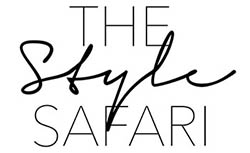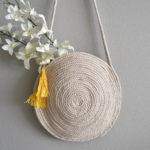I am so so excited for today’s post, and to unveil the patterned Shibori Dress I made in partnership wit Rit Dye! They challenged me to use their dyes to mix colors and make something interesting, and I immediately decided that I wanted to try a Shibori dress project.
When I was in college I took a class on textile surface design, and for myself and most of my classmates, it was our favorite class in school. We learned all sorts of techniques like shibori, silk painting, block printing, batik and more, but I wasn’t sure I was ever going to use those skills again. I visited my old college campus for my 10 year reunion last month, and I was newly inspired by the beautiful creations that the students were making, which of course challenged me to make something myself.
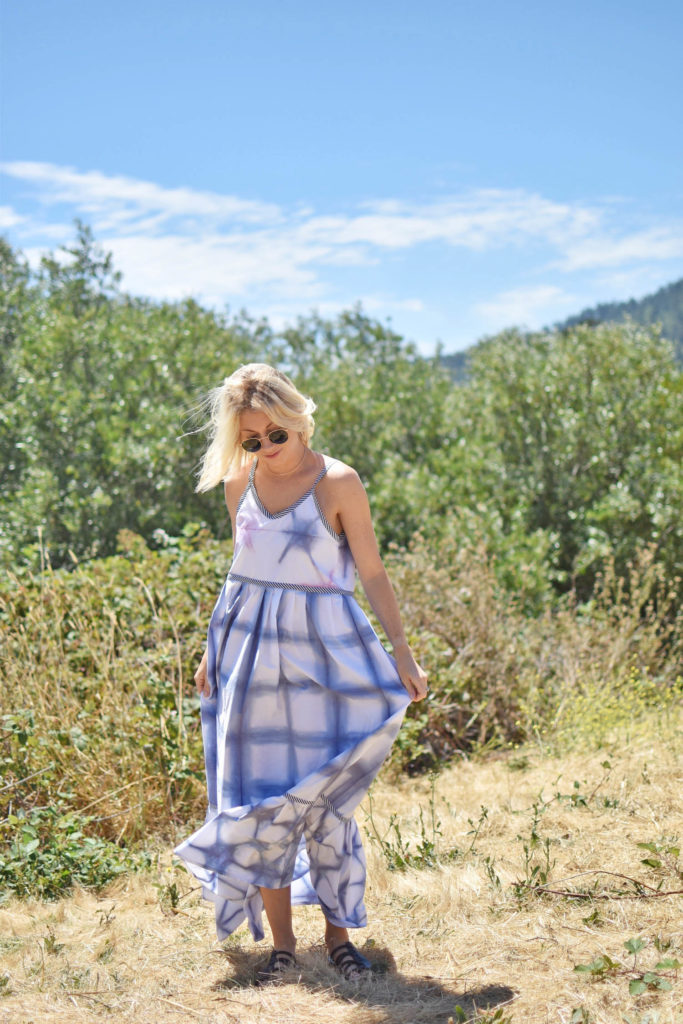
You can watch the video I created for more detail on how I wrapped, folded and clamped the fabric for this dress, and how each individual panel was dyed to create different shape and color effects. If you are looking to recreate something like this yourself, I recommend using unfinished silk or cotton in order to have the dye take better. I bought my fabric at Dharma Trading, as they have lots and lots of supplies for dye projects (even finished dresses, tablecloths and napkins) to take the work out of sourcing the materials. And if you don’t sew, this is even better since you can buy finished garments to try dyeing yourself.
I can’t believe how well the shibori dress came out… I thought for sure some of the fabrics wouldn’t dye right or that I would mess up the dye bath somehow. But it was shockingly easy to do and the result blew my mind! I mixed 4 colors of Rit Dye to make the colors I used Navy Blue and Black for the blue tone, and Petal Pink and Pearl Grey for the pink tone. I kept them watered down so that they were a little lighter and more ethereal in color. Next time I would probably saturate them a little more, as you have to remember after you wash them the first time a slight amount of color comes out.
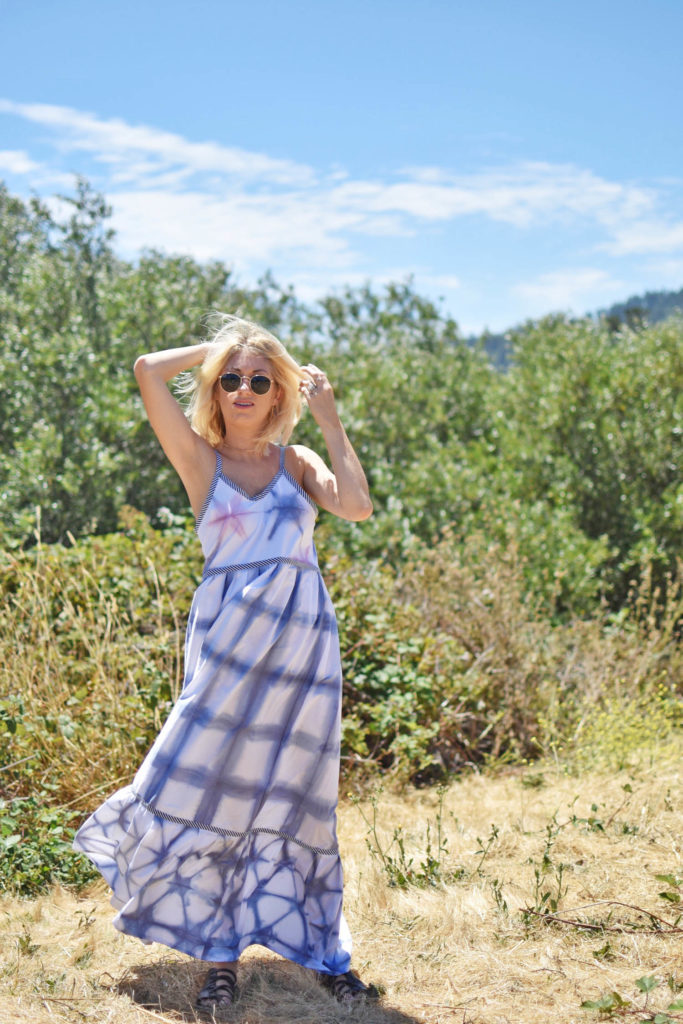
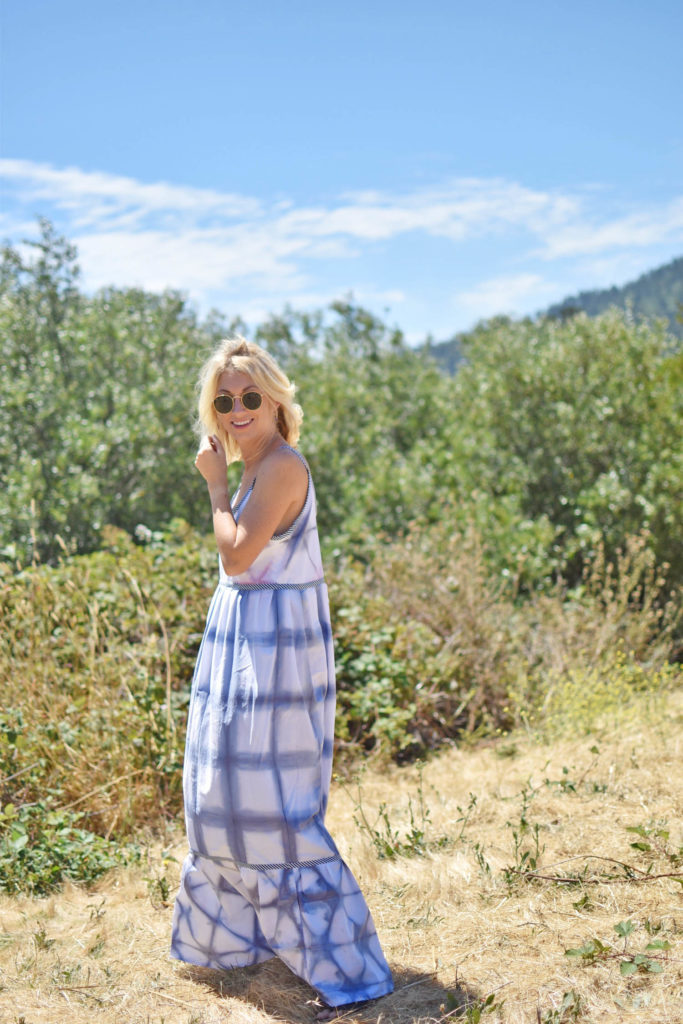
When folding your fabric, there is really no right or wrong way to do it. If you google shibori printing online, you will find lots of different tutorials as to how to create different techniques. I also found this book particularly helpful, so I bought it to keep!
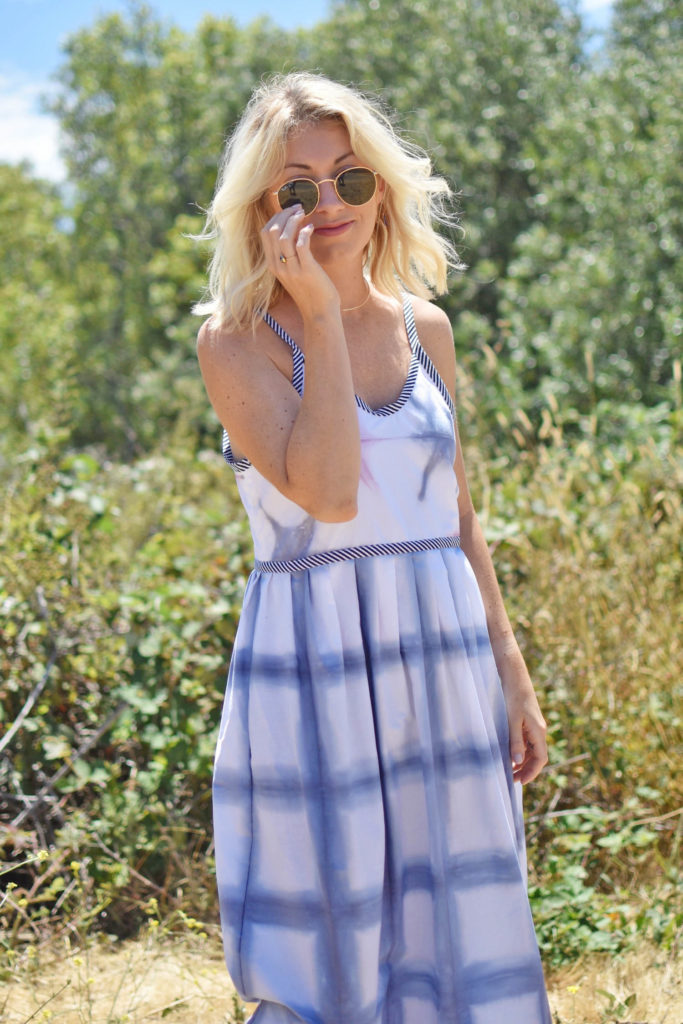
Making the dress was actually the hardest part! I had all of these disjointed fabrics patterns and I had to find a way to use them all in a design. I decided to go with something easy like a maxi dress, which was trimmed out with my favorite striped bias binding. For such a simple dress style, I was really able to create a lot of look with just these printed sbibori fabrics and some simple trim!
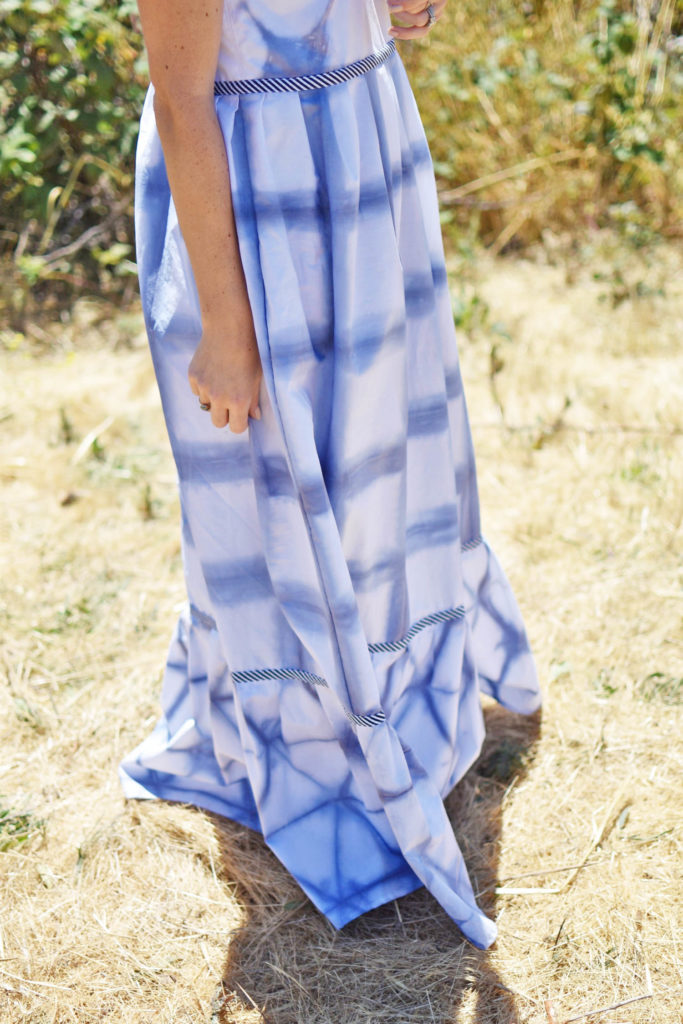
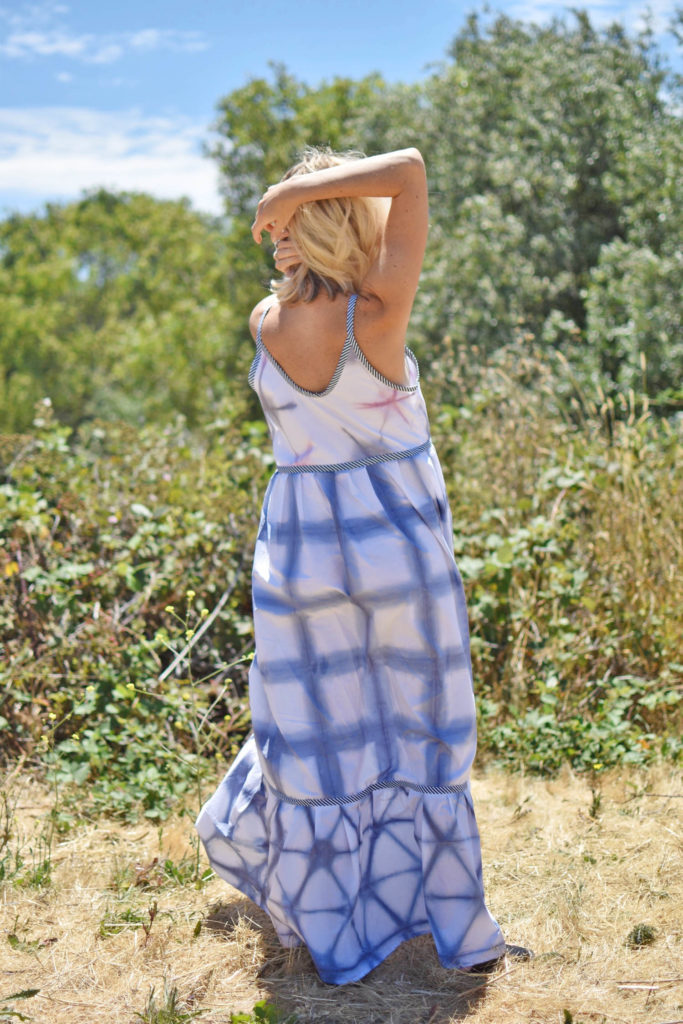
Even if you don’t have the skills or desire to dye and sew your own shibori dress, you can now recognize this print when you are out shopping (especially for pillows and art-it’s everywhere) and know how its made! Hopefully I have just inspired you to Shibori dye your own project, or at least buy one of these beautiful shibori print items to add a little japanese flavor to your life!
